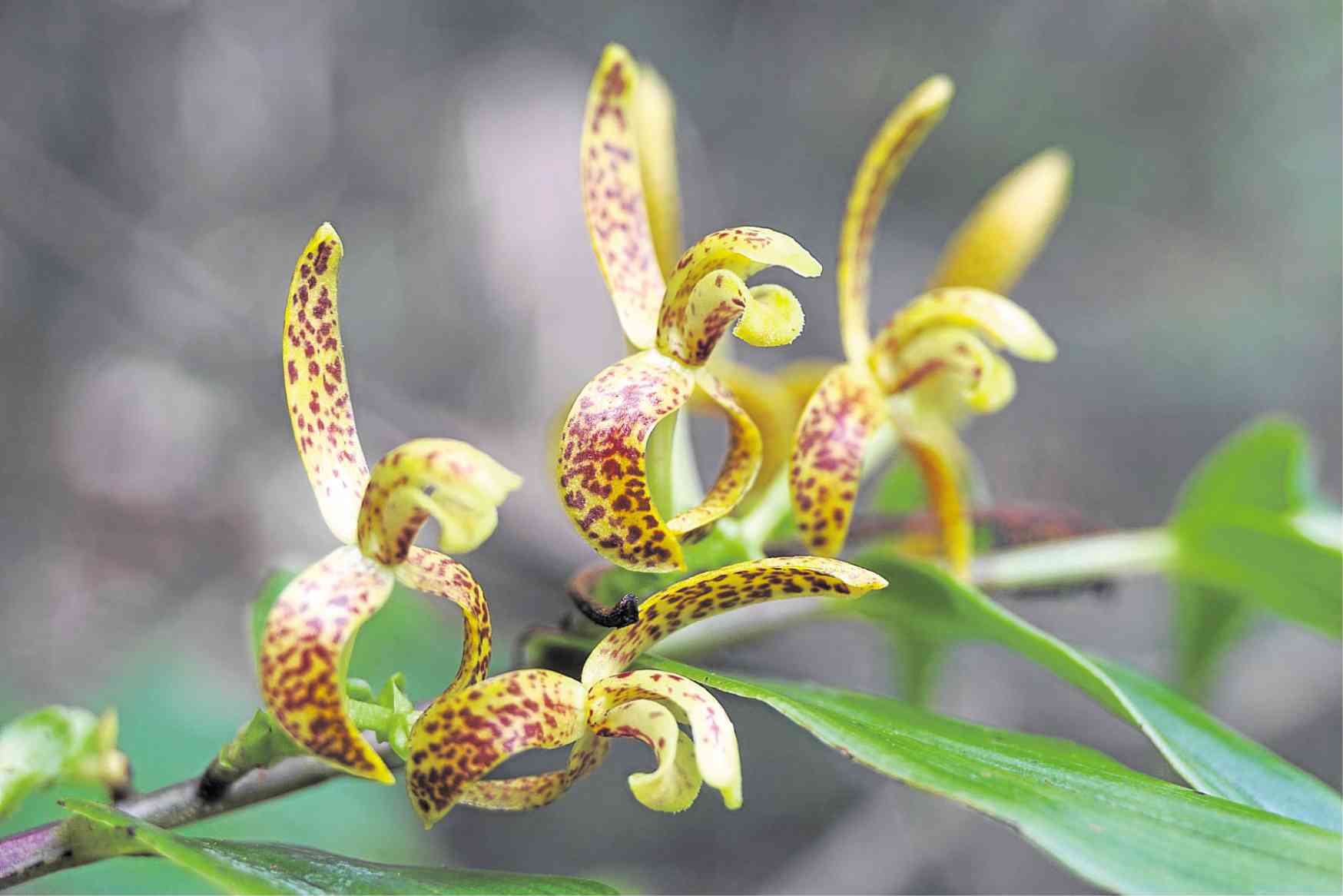In Samar, there’s a new orchid on the block

PRECIOUS BLOOM This recently discovered species of orchid, called Pseuderia samarana (P. Samarana), is found in the forests of Paranas town in Samar province. Classified as “critically endangered” by conservationists, the rare flower is threatened by land conversion, timber poaching and slash-and-burn farming. —ZHEREELEEN MENESES/Contributor
SAN PEDRO CITY, Laguna, Philippines — A rare species of orchid has been discovered on Samar Island but scientists are racing against time to protect what is left of this flower in the wild after it has been classified as “critically endangered.”
The Pseuderia samarana (Orchidaceae) is the first record of orchids belonging to genus Pseuderia in the Philippines, according to botanist Zhereeleen Meneses, a professor of environmental biology at the University of the Philippines Los Baños.
Pseuderia orchids, she said, are found primarily in New Guinea and on the islands of Moluccas, Micronesia, the Solomon Islands and Fiji.
Meneses, with Australian coauthor James Edward Cootes, published her work on P. samarana in the latest issue of science journal Taiwania, International Journal of Biodiversity, on Aug. 16.
Meneses, 27, said her group discovered the orchid during a field study in 2015 on the hills of Paranas, a second-class municipality in Samar province.
Article continues after this advertisementSmaller flowers
Article continues after this advertisement“Amazingly, [the orchids] are found only on top of the hills, [particularly] in forests over limestone formations,” Meneses said in a telephone interview on Wednesday.
She said they had seen just about 20 to 30 “mature individuals” of the orchid each time during several treks back to Paranas.
Meneses, in the journal, said P. samarana shared similarities with orchid species P. frutex and P. Floribunda.
During the plant’s early stage, P. samarana stays low close to the soil but eventually vines out as it matures. The flowers (1.5 to 1.6 centimeters by 1.1 to 1.4 cm) bloom into yellow with reddish-purple marks.
“Its labellum (main flower) is generally smaller compared with common orchids we see in garden shows,” Meneses said.
- samarana’s clinandrium, the part where the anther is, is not serrated (with jagged edge or sawlike), unlike most orchids in the Philippines.
Conservation efforts
- samarana is the latest addition to the approximately 1,100 species of known orchids in the Philippines. Globally, there are about 23,000 orchid species.
But Meneses said P. samarana fell under the International Union for Conservation of Nature Red List category as “critically endangered.” This was based on scientific computations, for instance, the species population against the area it occupies.
Meneses said they tried to grow P. samarana seedlings in Los Baños, Laguna, but their attempts were unsuccessful.
“It may have something to do with the [type of] soil [where it grows in Samar],” she said.
Meneses said P. samarana might have been existing in the Philippines for a long time, the genus possibly having reached Samar province through earlier movements of tectonic plates.
Since 2015, there have been global scientific efforts to conserve orchid species in Samar, she said.
Local scientists, Meneses said, are working for the inclusion of P. samarana in conservation initiatives.
Although Paranas falls within the Samar Island Natural Park, a government protected area, scientists still found threats to the P. samarana population, particularly from land conversion, timber poaching and slash-and-burn farming.